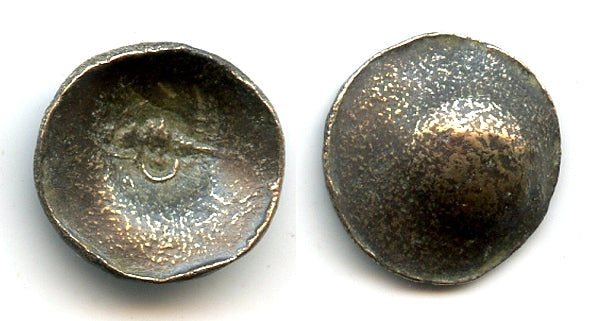
Disjointed horse's head right / Blank. 15mm, 0.61 grams each. Unpublished in the standard references, but were presented in a research paper by Alexander Naymark in JONS 2011 (#208), cf. Zero 121347.
These coins are extremely crude, with the horse's head reduced to a number of lines and dots. The are struck in a peculiar way, as scyphate (cup-shaped) coins. This piece is a rare coin, not commonly seen.
These coins were minted in the very late 6th century or the early 7th century. They are probably derived from the earlier Samarqand "horse-head" imitations of Antiochus. A few hoards of these are known, allowing for a clear dating. A hoard from Panjikant contained two coins like this and a dozen of the very last coins of the 4th period of archer coinage (in Zeimal's classification) datable to the very end of the 5th to the early 6th century. Moreover, hoard itself was found during the excavations in stratigraphic conditions which firmly suggest the 6th century date. Second hoard, the one from Qara-tepe on Narpay, consisted only of coin in question, but the stratigraphic conditions of its discovery firmly suggest the 6th or early 7th century: coins of the hoard fell off some high spot in a room destroyed in the early 7th century and spread on the floor (most likely the hoard was hidden behind the wooden frame of the door) which is dated to the early 7th century. Of separate finds, the most important is constituted by two specimens from a burial in Karnab -- they are firmly dated to the 6th or early 7th century by the ceramic vessels found in the burial. All other coins with provenance information come from the so called Early Mediaeval strata (6th - 7th centuries).
